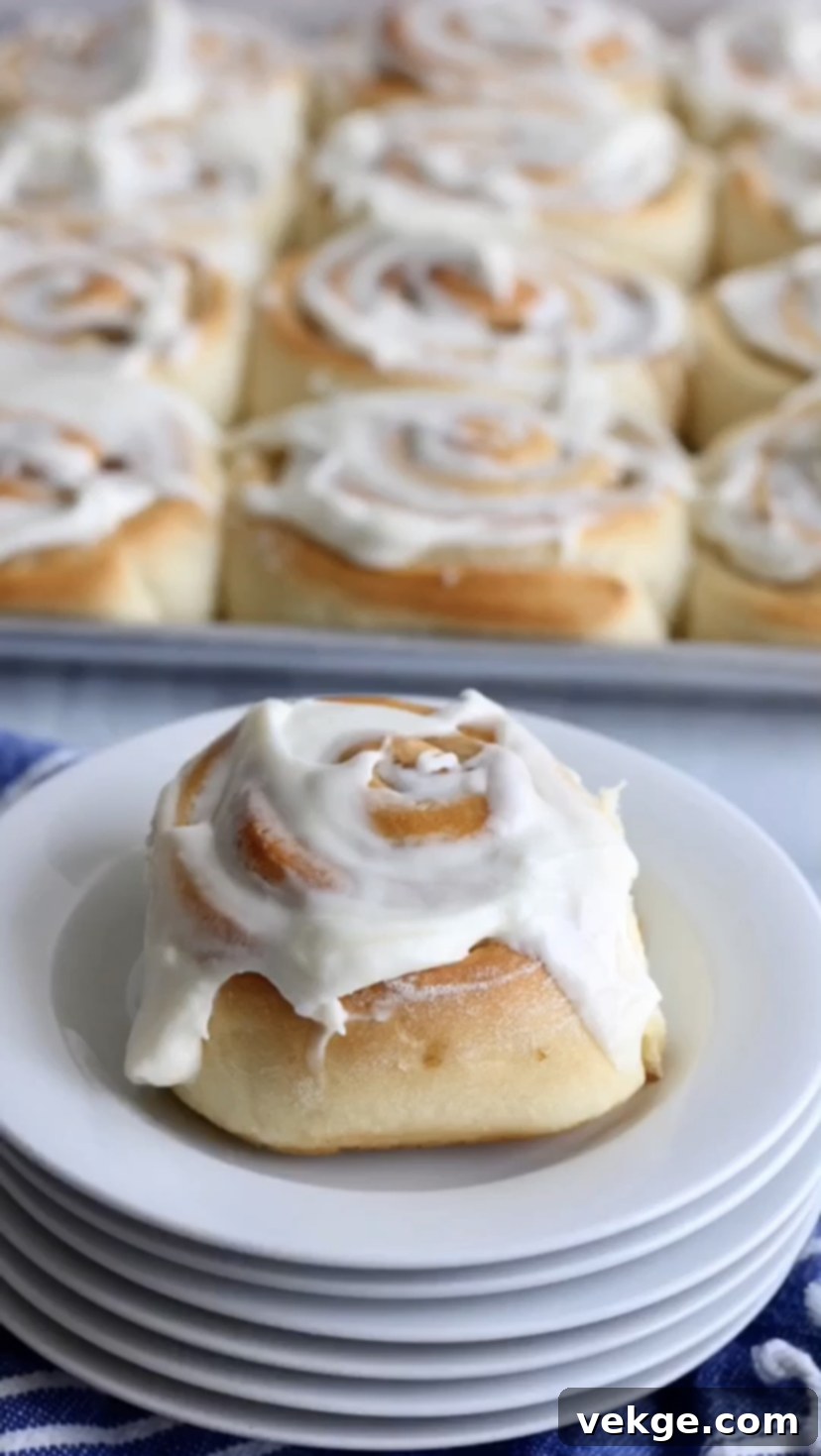This post contains affiliate links, and I may receive a commission on your purchase at no extra cost to you. Thank you for supporting my site by shopping through these links.
Prepare to meet your new favorite sweet treat! I’ve discovered a recipe for cinnamon rolls that truly lives up to its legendary status, and it’s quickly become a cult favorite for a reason. These aren’t just any cinnamon rolls; they are incredibly soft, supremely delicious, and astonishingly quick to prepare, taking only 70-90 minutes from start to finish. And the cream cheese frosting? It’s absolutely heavenly – rich, tangy, and perfectly complements the warm, spicy rolls. This recipe yields a generous 32 rolls, making them perfect for feeding a crowd at a party, sharing with neighbors, or simply enjoying throughout the week. If 32 rolls are too many, feel free to half the recipe, but trust me, these disappear fast!
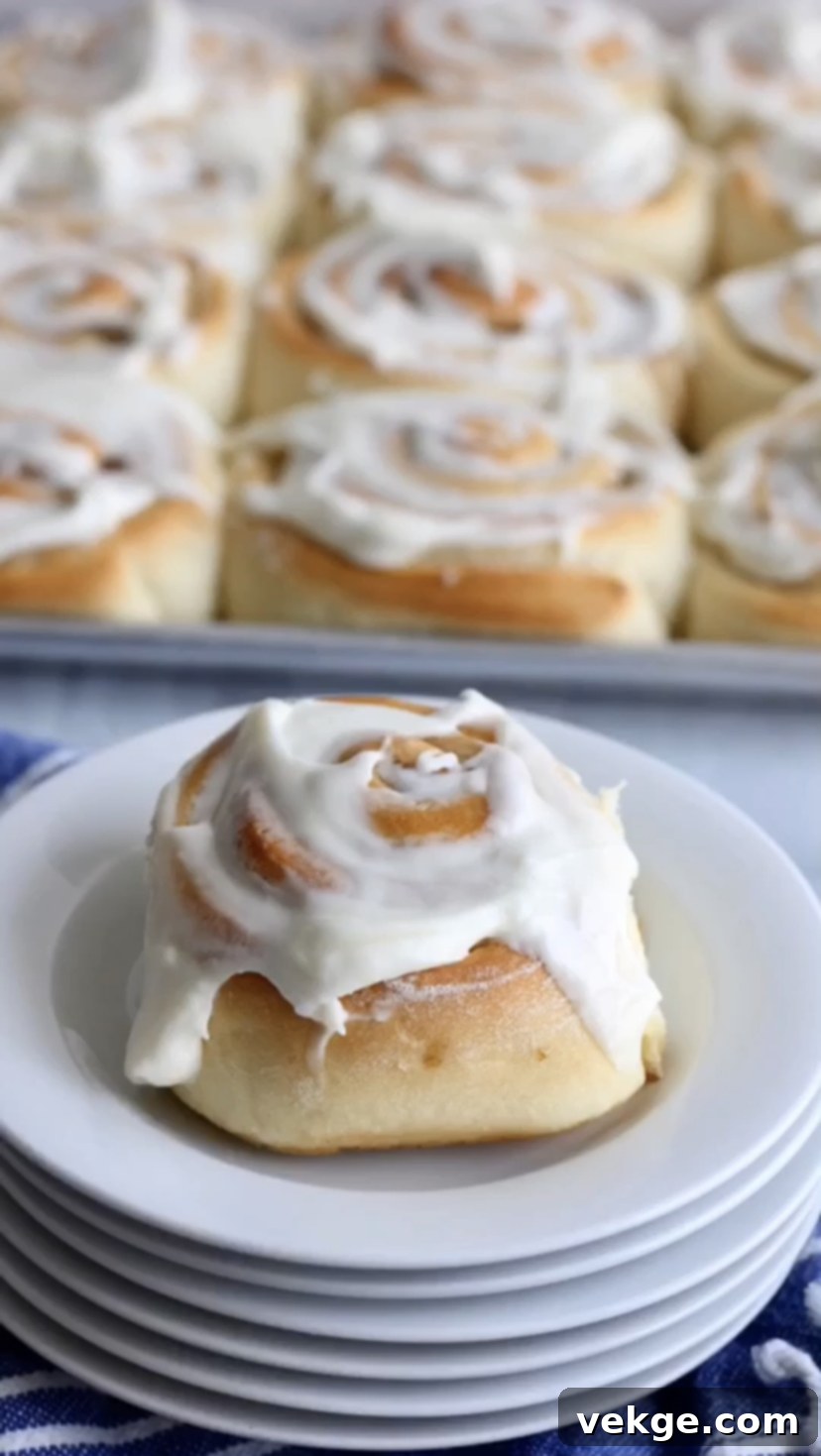
Watch the Baking Process!
Seeing the steps in action can be incredibly helpful for baking success. This video guides you through the entire process, from mixing the dough to rolling out those perfect spirals and slathering on the decadent cream cheese frosting. It’s like having a personal baking assistant right in your kitchen, ensuring you achieve the same soft, fluffy, and utterly irresistible results.
Handy Baking Notes
To ensure your cinnamon roll baking experience is as smooth and successful as possible, here are some essential tips and considerations. From preparing ahead of time to exploring variations, these notes will help you master this incredible recipe and tailor it to your needs.
Make Ahead for Convenience
Life can get busy, but that shouldn’t stop you from enjoying fresh, warm cinnamon rolls. This recipe is wonderfully adaptable for making ahead, allowing you to prepare most of the work in advance and simply bake them when you’re ready to indulge. Imagine waking up to the aroma of cinnamon without the early morning rush!
To prepare these rolls in advance, follow steps 1 through 8 as directed in the recipe card below. Once your cinnamon rolls are arranged on the greased pans, instead of letting them rise at room temperature, cover the pans tightly with plastic wrap. Place them in the refrigerator for up to 24 hours. When you’re ready to bake, remove the pans from the fridge and allow them to come to room temperature, which might take 30-60 minutes depending on your kitchen’s warmth. Observe them closely; if they haven’t risen sufficiently after coming to room temperature, give them an extra 15-30 minutes to rise further in a warm spot. Once adequately risen, preheat your oven and bake as usual. This method ensures you get that fresh-baked taste with minimal last-minute effort.
Sourdough Adaptation: A Flavorful Twist
For those who love the distinctive tang and depth that sourdough brings to baked goods, you’ll be delighted to know that these cinnamon rolls are incredibly sourdough-friendly. Incorporating sourdough not only adds a unique flavor profile but can also enhance the texture and digestibility of the rolls.
For specific instructions on how to convert this quick yeast recipe into a sourdough masterpiece, please refer to my dedicated SOURDOUGH CINNAMON ROLLS POST. There, you’ll find all the details needed to adapt this recipe using your sourdough starter.
If you’re new to sourdough or want to refine your skills in maintaining and utilizing your own starter, I highly recommend checking out my NATURAL YEAST SOURDOUGH SANDWICH BREAD POST. It provides comprehensive guidance that will empower you to use your natural yeast in a variety of delicious ways.

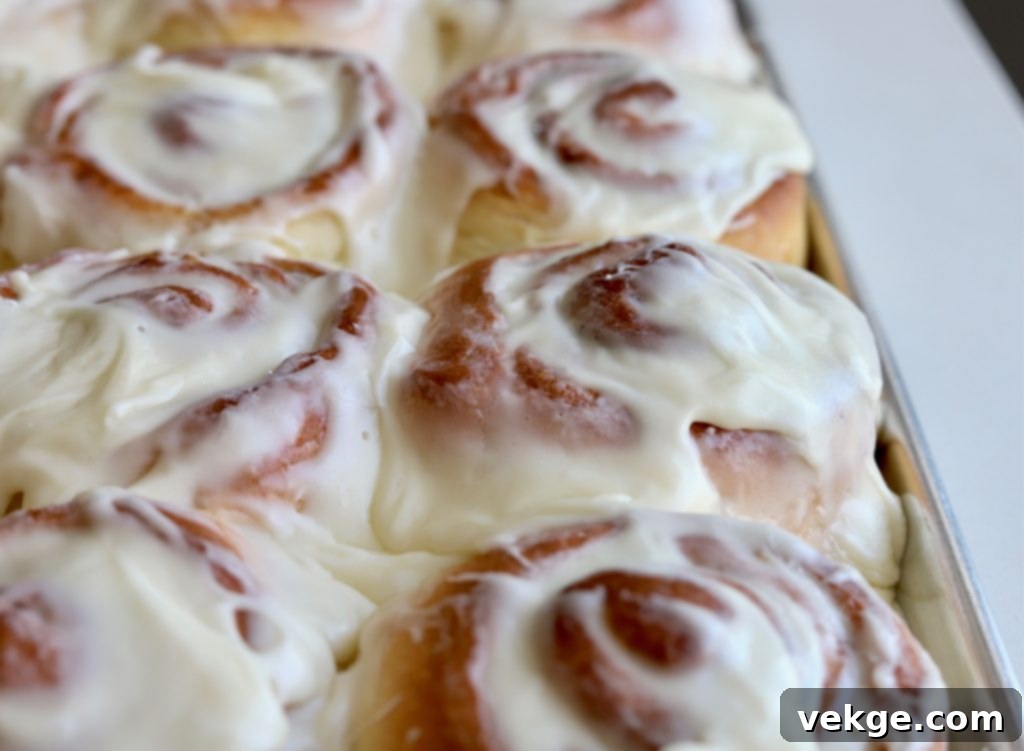
A Deep Dive into Key Ingredients
Understanding the role each ingredient plays is crucial for achieving the perfect cinnamon roll. Here, we’ll explore the various components of this recipe, offering insights into why they are chosen and how substitutions might affect your final product. From the type of flour to the specific sweetener, every element contributes to the overall success of these heavenly treats.
Flour: The Foundation of Your Rolls
The choice of flour significantly impacts the texture and structure of your cinnamon rolls. This versatile recipe can accommodate several flour types, including bread flour, all-purpose flour, whole wheat flour, or even ancient grain options like Kamut flour.
Bread Flour: My personal favorite for sourdough and many yeast-leavened breads is bread flour. Its higher protein content (and thus more gluten) compared to all-purpose flour results in a dough that can develop more strength and elasticity. This leads to a taller, more buoyant rise and a finished roll that is incredibly soft with a beautiful, satisfying chew. Most grocery stores carry bread flour, but for an exceptional quality, I often use organic bread flour from a local mill, LEHI MILLS.* They prioritize sourcing wheat from farmers who avoid glyphosate, which is a major plus for health-conscious bakers. (Use affiliate coupon code AMBERSKITCHEN for 10% off your purchase.) The superior gluten structure truly makes a difference in the final product’s texture and loft.
All-Purpose Flour: If bread flour isn’t readily available, all-purpose flour makes a perfectly acceptable substitute. It can be used as a direct, straight-across replacement for bread flour in this recipe, yielding delicious results with a slightly less chewy texture.
Whole Wheat Flour: For a more wholesome option, whole wheat flour can be used. However, due to its heavier nature and higher absorbency, you’ll typically need to adjust the quantity. Whole wheat flour is quite “thirsty,” so you might use slightly less than the amount of bread flour called for – perhaps 7.5 to 7.75 cups instead of 8.5 cups. Always gauge by dough texture rather than sticking strictly to measurements when using whole wheat. Additionally, when combined with yeast (or sourdough), whole wheat flour tends to require a considerably longer rising time and won’t achieve quite the same lofty rise as white flours. A fantastic compromise for health benefits without sacrificing too much rise or softness is to use a 50/50 blend of whole wheat and bread flour. This blend still offers the nutritional advantages of whole grain while maintaining a more manageable rise time and improved texture.
Kamut (Khorasan) Flour: Kamut, an ancient grain also known as Khorasan wheat, offers a unique, slightly nutty flavor that can elevate your cinnamon rolls. It hasn’t undergone the extensive genetic alteration of modern wheat varieties. While it can substitute all-purpose or bread flour, it’s more absorbent, so reduce the total flour amount by about 10%-15% if using Kamut. In my experience, Kamut rolls may not rise quite as high and can sometimes have a slightly more crumbly texture. I source my regeneratively grown Khorasan locally from KHORASANMILLS.COM (not sponsored), and I believe they ship across the United States, making this fantastic ancient grain accessible to many.
*This is an affiliate link, and I may receive a commission on your purchase. Your support through these links is greatly appreciated.
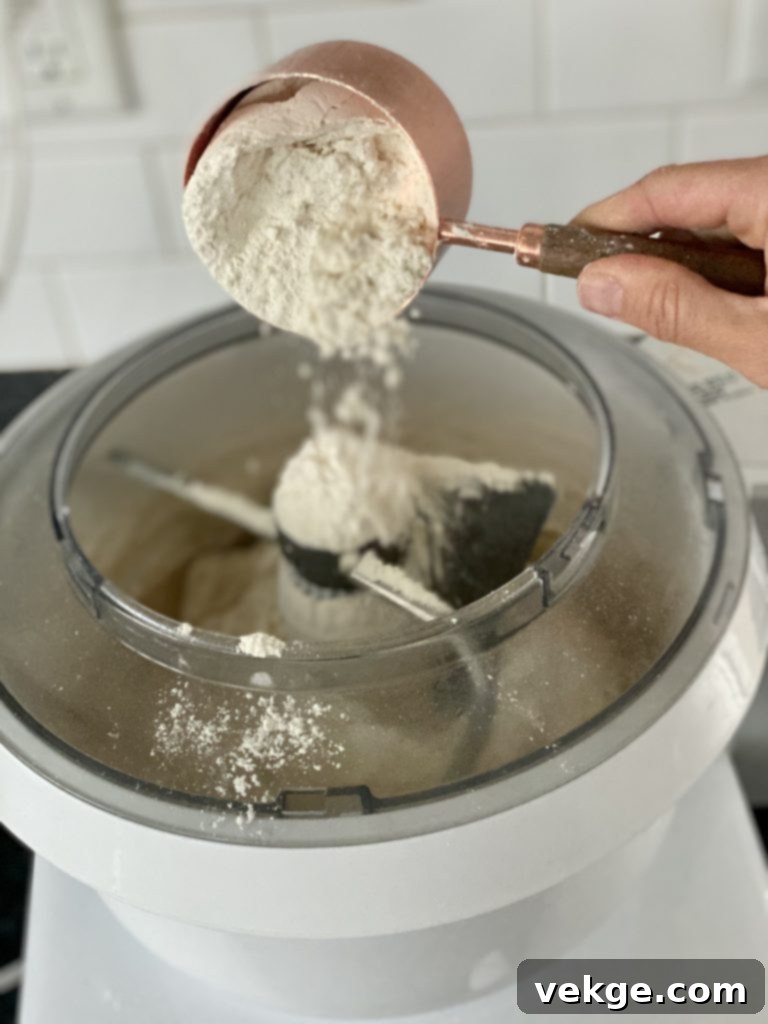
Salt: More Than Just Seasoning
The quality of your salt can profoundly impact the flavor of your baked goods. I am particularly selective about my salt, exclusively using fine sea salt from Redmond Real Salt. This isn’t just a preference; it’s a commitment to purity and mineral richness. Redmond Real Salt is harvested from an ancient sea bed in central Utah, making it a true, unrefined sea salt.
What sets it apart? It’s brimming with naturally occurring trace minerals, completely pure, unprocessed, and free from fillers, anti-caking agents, additives, or unhealthy pollutants often found in commercial table salts. Sadly, many conventional salts are heavily processed, stripped of their beneficial minerals, and laden with undesirable chemicals. Using Redmond Real Salt not only enhances the overall flavor profile of the cinnamon rolls but also contributes to better dough structure and a more wholesome product. To make it more cost-effective, I often purchase a 25-pound bulk bag every few years, storing it in airtight mason jars. It lasts for years and is well worth the investment for its superior quality. You can find my preferred salt HERE.*
Don’t forget to use my affiliate coupon code “AMBERSKITCHEN” to save 15% on any Redmond products!
*This is an affiliate link, and I may receive a commission on your purchase. Thank you for supporting my baking journey.
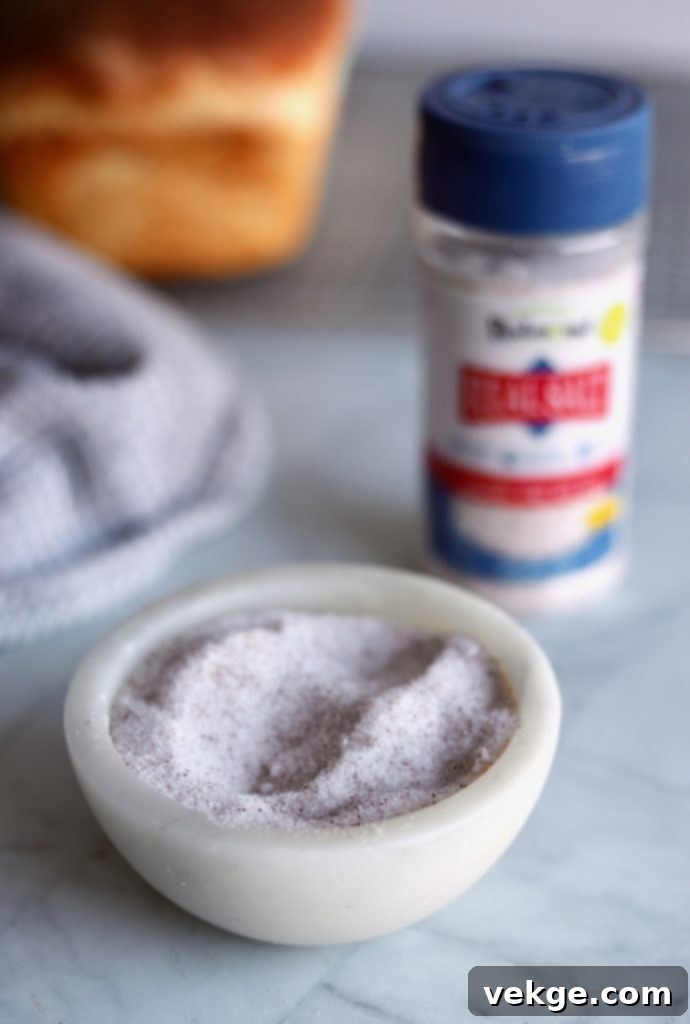
Water: The Lifeblood of Your Dough
The temperature of your water is more critical than you might think when working with yeast. Aim for room temperature to slightly warm water, ideally between 95°F and 105°F (35°C-40°C). If the water is too cold, the yeast will activate sluggishly, prolonging the rising time significantly and potentially resulting in a denser final product. Conversely, if the water is too hot, it can shock or even kill the delicate yeast, preventing your dough from rising altogether. The slight warmth provides an optimal environment for the yeast to thrive and do its job effectively, producing the airy, soft texture we crave in cinnamon rolls. Using a kitchen thermometer can help you achieve the perfect temperature for consistent results every time.
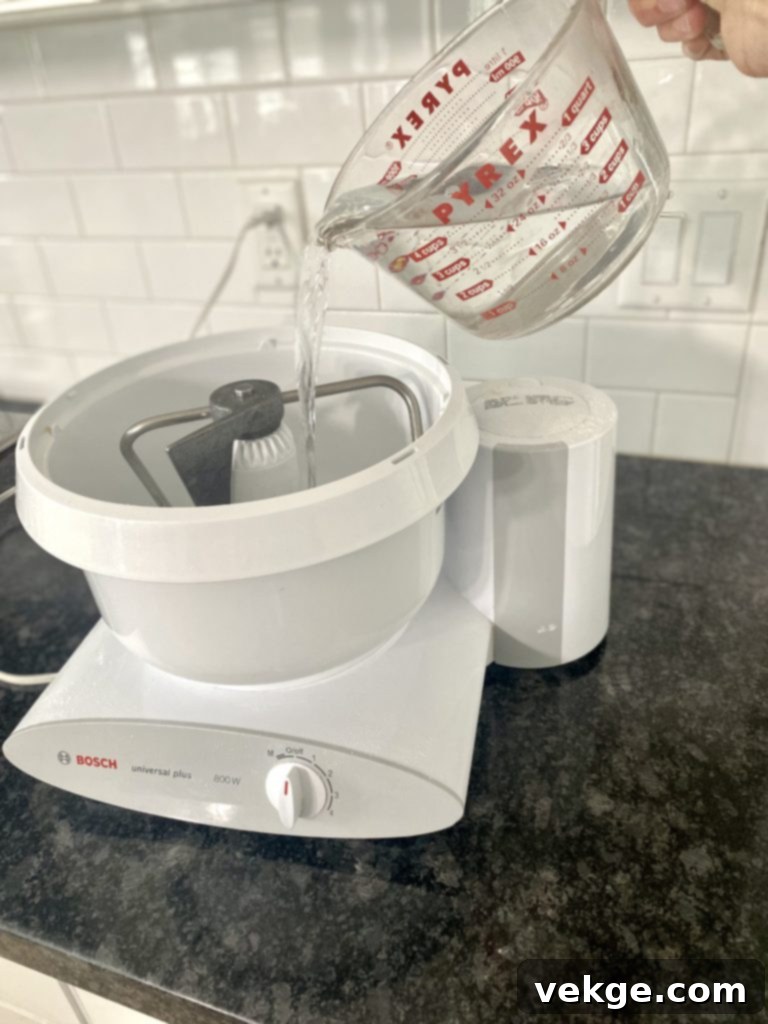
Sugar: Sweetness and Structure
Sugar plays multiple roles in these cinnamon rolls, contributing not only sweetness but also aiding in yeast activation, moisture retention, and caramelization. Each type of sugar used serves a specific purpose:
For the dough, granulated sugar is my preferred sweetener. It provides the necessary food for the yeast, helping the dough to rise beautifully, and contributes to a tender crumb. While granulated sugar is ideal, you could also experiment with honey or coconut sugar as a straight-across substitute in the dough, though they might impart a slightly different flavor profile and color.
In the cinnamon roll filling, brown sugar is non-negotiable. Its molasses content gives it a distinct deep, caramel-like flavor and a slightly moist texture that is essential for that rich, gooey filling. This is where a significant part of the classic cinnamon roll taste comes from, and substituting it would compromise the authentic flavor experience.
Finally, for the luscious cream cheese frosting, powdered sugar (confectioners’ sugar) is an absolute must. Its fine texture dissolves effortlessly, creating a smooth, creamy, and lump-free frosting that melts in your mouth. Any other sweetener, such as granulated sugar, would result in a grainy and unappealing texture, so stick with powdered sugar for the ultimate frosting.
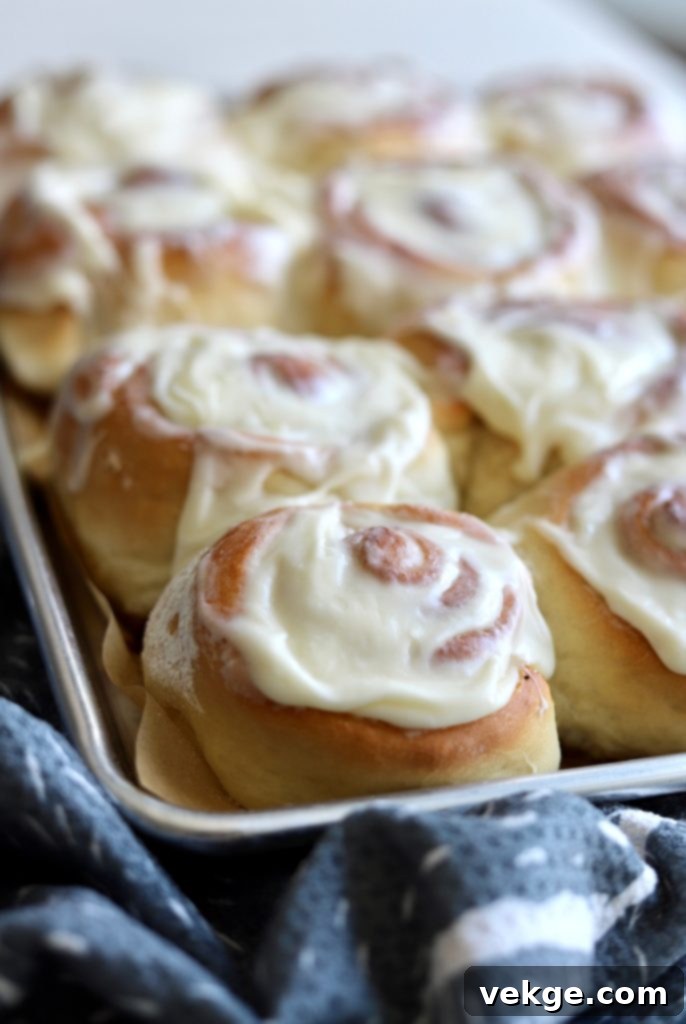
Eggs: For Richness and Softness
Eggs are a vital ingredient in this cinnamon roll recipe, serving several important functions. They contribute significantly to the dough’s richness, imparting a beautiful golden hue and a tender, soft texture that is truly irresistible. Beyond texture, eggs also act as a natural emulsifier, helping to stabilize the dough and provide structure, which aids in achieving a consistent rise and a moist finished product.
If you have dietary restrictions or simply prefer to avoid eggs, there are excellent replacement options available:
1. Aquafaba: This surprising ingredient is the liquid in which chickpeas have been cooked. Aquafaba remarkably mimics the properties of egg in many baked goods and is a staple in vegan baking. To use, simply drain 1/4 cup of the liquid from a can of chickpeas and use it as a substitute for each egg required in the recipe. It works wonders in providing moisture and a slight binding effect without altering the flavor.
2. Flax Egg: Another fantastic egg replacement is a flax egg. To make one, combine 1 tablespoon of ground flaxseed meal (ensure it’s freshly ground raw flaxseed for best results) with 2 1/2 tablespoons of water. Mix them thoroughly and let the mixture sit for about 5 minutes until it thickens to a gel-like consistency. This flax egg can then be used as a substitute for one egg.
If you decide to half this recipe, which calls for 3 eggs, you might find yourself needing 1.5 eggs. To avoid waste, you can simply use either 1 or 2 whole eggs for the halved recipe; the dough is forgiving enough that this slight adjustment won’t significantly impact the final outcome.

Coconut Oil: The Secret to Superior Softness
For many years, like many bakers, I relied on vegetable oil for my bread recipes. However, upon learning about the less-than-ideal health implications of vegetable oils, I sought a healthier alternative and discovered the magic of melted coconut oil. To my delight, not only did it work, but it transformed my baked goods, making them even more incredible!
Contrary to what you might expect, coconut oil doesn’t impart any coconut flavor to the bread. Instead, it contributes to an unparalleled softness and a delicate crumb that is simply divine. It’s truly a game-changer for bread and baked goods, and I’m proud to have been an early advocate for its use in doughs before it caught on like wildfire. You heard it here first – coconut oil is a secret weapon for achieving superior texture!
For the absolute best texture in all my doughs, including these cinnamon rolls, I wholeheartedly recommend coconut oil. If coconut oil isn’t an option for you, my next recommendation would be a straight-across substitution with avocado oil or melted butter. Both offer a neutral flavor and can contribute to a tender dough. If you don’t have concerns about using vegetable oil, that can also be used as a substitute, though it won’t yield quite the same delicate crumb as coconut oil.
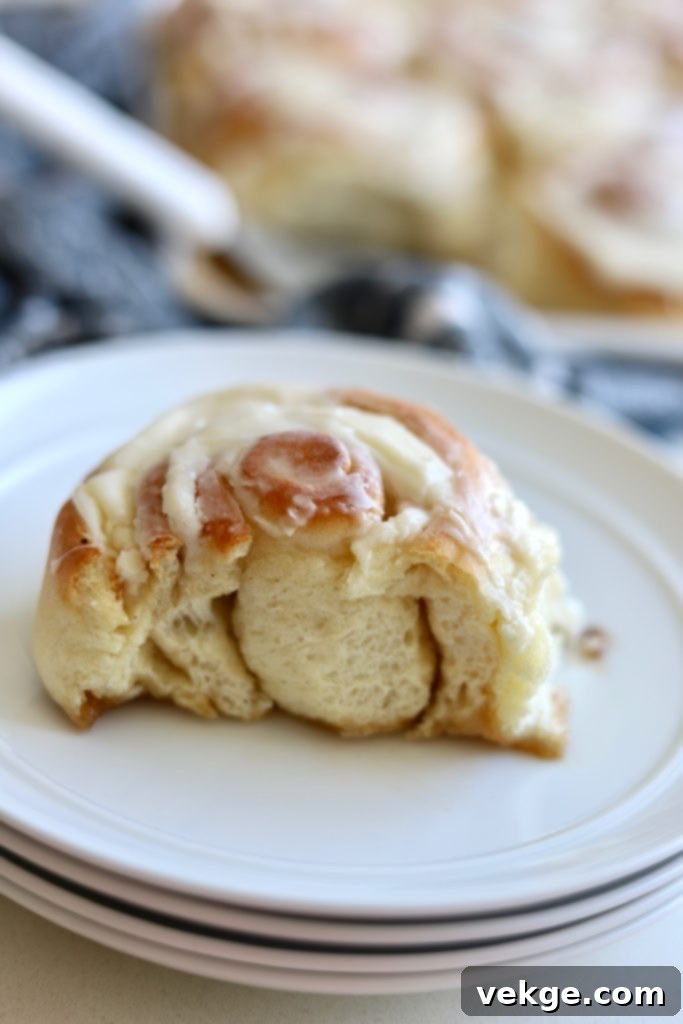
Butter: Indispensable for Flavor and Texture
In the realm of cinnamon rolls, butter is a non-negotiable ingredient, particularly for the filling and the frosting. Its rich, creamy flavor is essential for creating that luxurious, indulgent taste that defines a truly great cinnamon roll. In the filling, butter works with the brown sugar and cinnamon to create a gooey, caramelized layer that permeates the spirals of the roll. For the frosting, butter not only provides unmatched richness but also contributes to the frosting’s stiff yet spreadable consistency. Substituting butter with anything else would drastically alter the desired flavor and texture, so for the best results, stick with real butter.
Cream Cheese: The Heart of the Frosting
Cream cheese is a star player in the iconic frosting for these cinnamon rolls. Its tangy, slightly savory notes beautifully balance the sweetness of the rolls and the rich butter. When softened and whipped with butter and powdered sugar, it creates a wonderfully smooth, creamy, and pipeable frosting that is utterly irresistible. This ingredient is what elevates the frosting from merely sweet to truly decadent and complex, making it a cornerstone of this recipe’s appeal.
Almond and Vanilla Extract: Aromatic Enhancers
Flavor extracts are key to adding depth and complexity to your frosting, making it truly memorable.
Almond Extract: This is an optional addition to the frosting, but it offers a subtle, nutty undertone that many find delightful. A little goes a long way, so use it sparingly to avoid overpowering the other flavors. If you enjoy a hint of almond in your sweets, I highly recommend including it; otherwise, feel free to omit it.
Vanilla Extract: On the other hand, vanilla extract is a fundamental flavor enhancer that I strongly advise against skipping. Its mild, warm, and subtly sweet notes provide a perfect depth of flavor, rounding out the richness of the butter and cream cheese. It acts as a bridge for all the flavors, creating a harmonious and utterly delicious frosting that truly completes these cinnamon rolls.
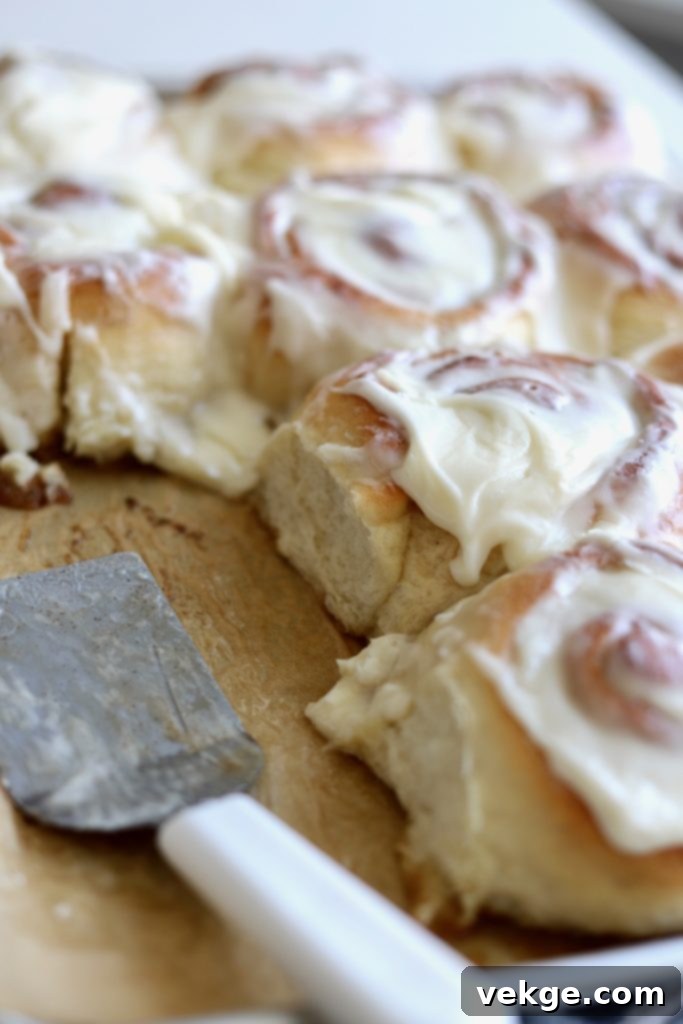
Rave Reviews and Delighted Bakers
Don’t just take my word for it; the proof is in the pudding, or in this case, the rolls! These cinnamon rolls have garnered an enthusiastic following, with countless home bakers sharing their success stories and heartfelt appreciation. Below are snapshots of what others are saying, showcasing the widespread love and satisfaction this recipe brings to kitchens far and wide. Their glowing feedback highlights the irresistible flavor, incredible softness, and the sheer joy of baking these divine treats.









Orange Roll Adaptation: A Zesty Alternative

Exciting news for citrus lovers! This beloved cinnamon roll recipe can be wonderfully adapted to create incredible orange rolls. As my sister Brooke enthusiastically put it, the orange version of this recipe is “ABSOLUTELY AMAZING”! It’s a delightful twist that brings a bright, zesty flavor profile to the classic comforting roll.
To transform these heavenly cinnamon rolls into an equally irresistible batch of orange rolls, simply follow these easy modifications:
1. **Prepare the Dough:** Make the dough exactly as directed in the recipe below. The base remains the same, providing that familiar soft and fluffy texture.
2. **For the Zesty Filling:** Replace the cinnamon in the filling with the finely grated zest of 3-4 fresh oranges. Instead of brown sugar, use white granulated sugar for a cleaner, brighter citrus flavor that doesn’t compete with the orange notes.
3. **Craft the Orange Frosting:** For a truly spectacular finish, combine these ingredients for your vibrant orange frosting:
- 2 sticks of softened unsalted butter (1 cup)
- 5 to 6 cups of powdered sugar
- The zest of 3-4 oranges (approximately 1.5 tablespoons of orange zest)
- The freshly squeezed juice of 3-4 oranges (simply use the juice from the oranges you zested!)
Whip all the frosting ingredients together using a stand mixer or hand mixer until the mixture is beautifully light, fluffy, and smooth. As soon as your warm orange rolls emerge from the oven, generously spread this luscious orange glaze all over them. The warmth of the rolls will allow the frosting to slightly melt and seep into every crevice, creating an unparalleled burst of citrusy sweetness. Enjoy this refreshing and absolutely amazing variation!

More Scrumptious Desserts to Explore…
If you’ve enjoyed these quick and heavenly cinnamon rolls, you’re in for a treat! My kitchen is full of delightful recipes designed to bring joy and sweetness to your table. From seasonal delights to timeless classics, there’s always something new and delicious to bake. Browse these other scrumptious dessert recipes:
Pumpkin Cinnamon Rolls
Chocolate Cream Pie
Pecan Pie Bars
Chocolate Chip Cookie Bars
Kate’s Lemon Cookies
Snickerdoodle Blondies
Coconut Tres Leches Cake
Biscoff Cheesecake Cups
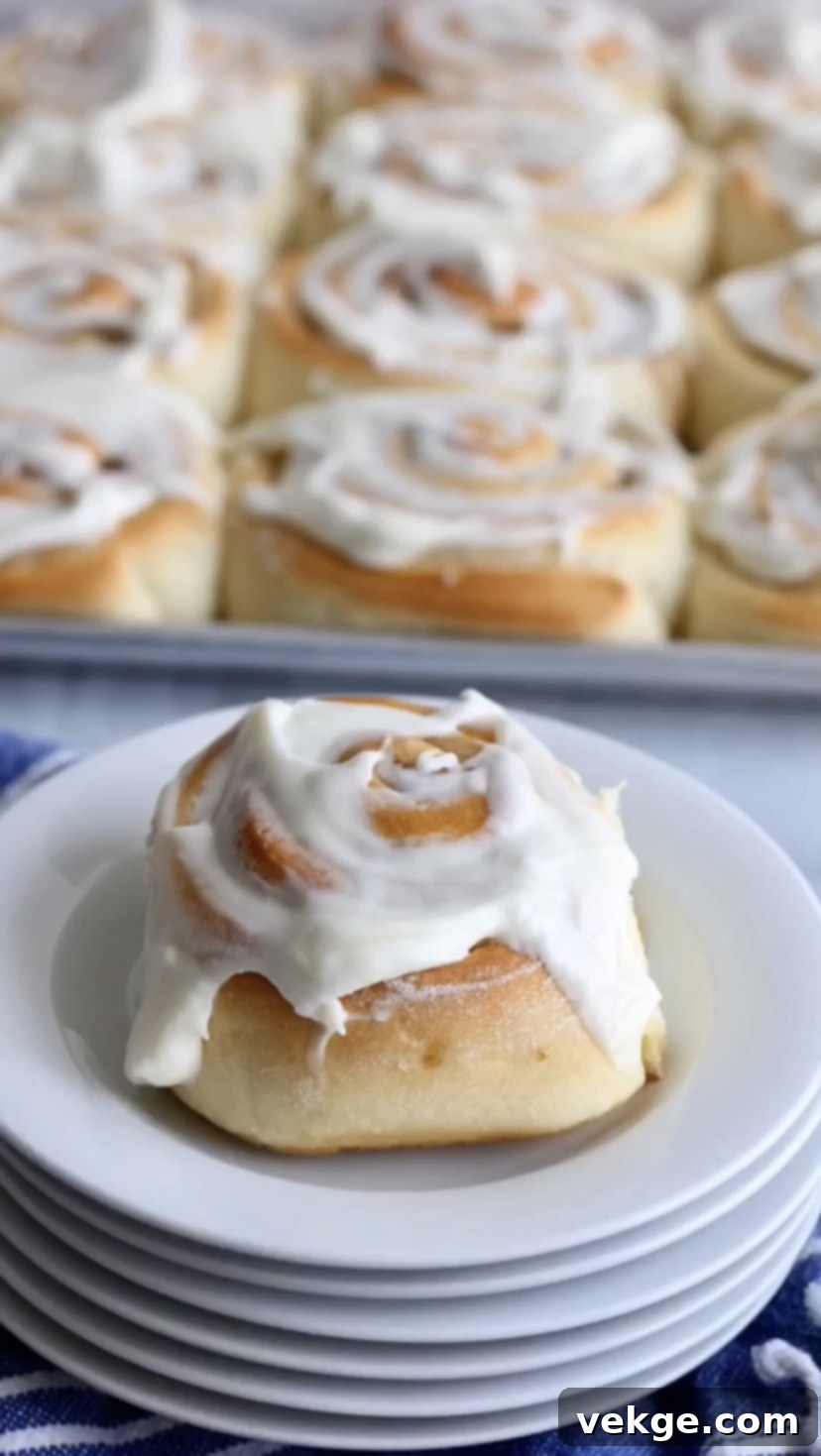

Quick and Heavenly Cinnamon Rolls
Quick and heavenly. That’s really all you need to know. You will not regret making these!
Rating: 4.91 from 41 votes
Print Recipe
Pin Recipe
Rate This Recipe
Ingredients
Dough
- 3 1/2 cups warm water
- 3/4 cups sugar
- 2 T active dry yeast
- 3 eggs
- 1/2 cup melted coconut oil
- 1 T salt
- 10-11 1/2 cups unbleached bread flour
Filling
- 10 T butter, divided
- 1 1/3 cup brown sugar, divided
- 2 tsp cinnamon
Frosting
- 1 cup butter, softened (2 sticks)
- 8 oz softened cream cheese
- 1 T milk
- 4 to 5 cups powdered sugar
- 1 tsp vanilla extract
- 1/2 tsp almond extract (if you like it)
- 1/4 tsp salt
Instructions
- In a stand mixer or large bowl, combine sugar, warm water, and yeast. Give it a quick mix, cover, and let yeast dissolve for 10 minutes.
- Add eggs, oil, and salt. Mix together. Then add the flour cup by cup while mixing in between. You have enough flour when 1- the dough doesn’t stick to the side of the bowl 2- the dough is tacky but doesn’t stick to your fingers. (Be careful not to add too much flour!)
- Knead for five minutes. If using a mixer, cover the dough while kneading to keep the heat inside.
- Cover the dough and let it rise 10 minutes. Preheat the oven to 375° F.
- Dump dough onto a floured surface. Divide in half and roll out each half into a large rectangle.
- On each half, spread 1/2 of the butter, and evenly sprinkle half of the cinnamon/brown sugar mixture.
- Tightly roll dough up into one long snake. Using cinnamon dental floss, thread, or a very sharp knife, cut the dough (as shown in video) into 16 even slices per dough snake. (Discard the ends)
- Onto two greased jelly roll pans, evenly lay out all cinnamon roll dough rounds, 16 per cookie sheet. Cover and let rise 10-30 minutes.
- Bake at 375° F for 14-15 minutes.
- For frosting: Using a stand mixer or hand mixer combine butter and cream cheese. Beat together for 2 minutes until light and fluffy. Then add milk, vanilla, almond extract, salt and powdered sugar.
Notes
Watch the Process:
https://amberskitchencooks.com/wp-content/uploads/2021/05/CINNAMON-ROLLS-VIDEO.mov#t=73
Good News! This recipe can be adapted to orange rolls! In the words of my sister Brooke, the orange version of this recipe is “ABSOLUTELY AMAZING”!
Simply make the following changes:
1. Make the dough as directed below.
2. For the filling, replace the cinnamon with the zest of 3-4 oranges. Instead of brown sugar, use white sugar.
3. For the orange frosting combine:
- 2 sticks of softened butter (1 cup)
- 5 to 6 cups powdered sugar
- zest of 3-4 oranges, or about 1.5 Tablespoons of orange zest
- Juice of 3-4 oranges (just squeeze the juice from the zested oranges!)
Whip the frosting ingredients together until it is light and smooth. When your orange rolls come out of the oven, spread the orange glaze all over the rolls! Enjoy!
